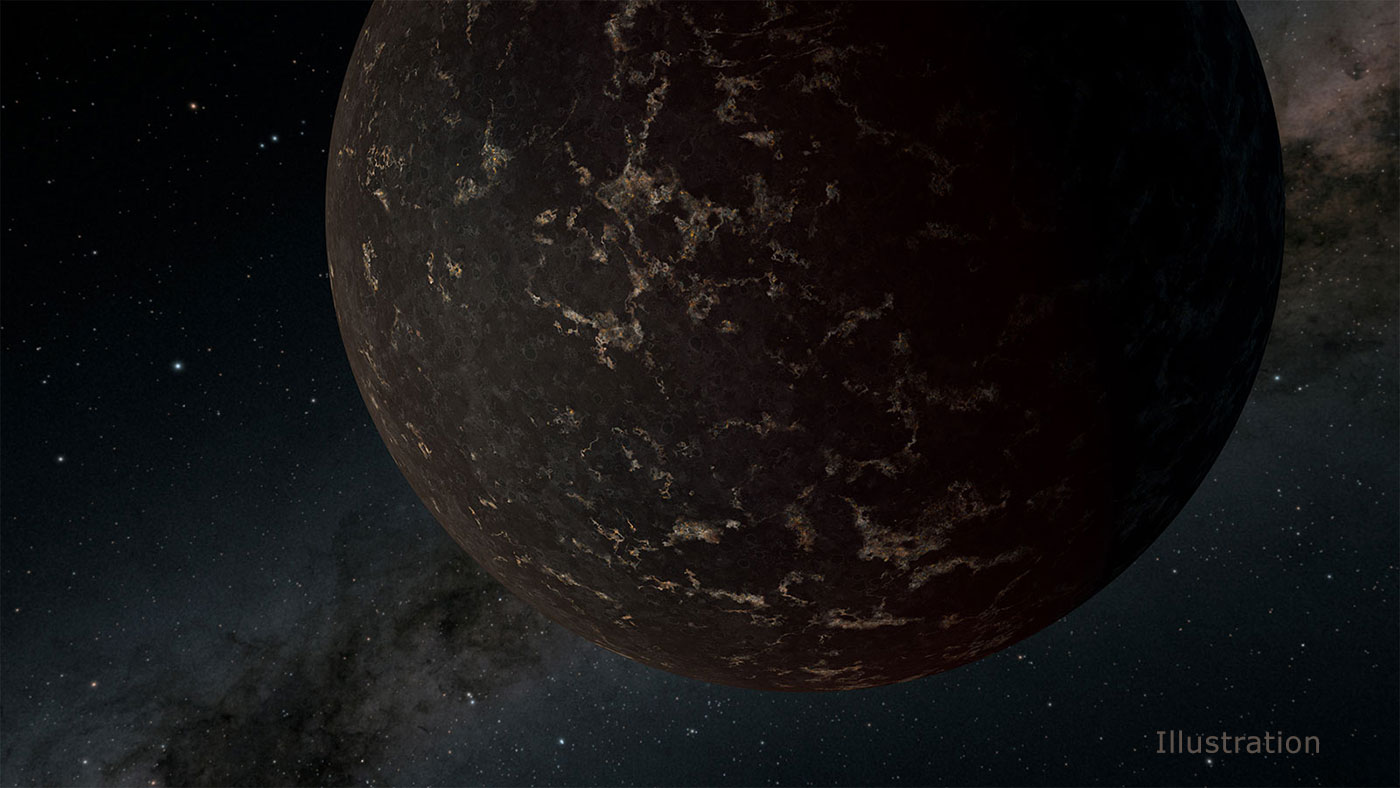
Astronomers have examined a planet that can only be described as a rocky hellscape: Heat of thousands of degrees, lava on the surface, and almost no atmosphere. Using the Spitzer telescope, a team was able to take a look at the close-up conditions of planet LHS 3844b, located 48.6 light-years from Earth and in orbit around an M dwarf star.
The planet completes an orbit in just 11 hours, which means it is very close to its star. It’s highly likely this means the planet is “tidally locked,” where one side of the planet always faces the star and is heated to 1,410 degrees Fahrenheit (770 degrees Celsius). It is this tremendous heat that made the planet visible to Spitzer, as it radiates large amounts of infrared light.
The other side of the planet faces away from the star and is much cooler. However, the astronomers saw very little heat transferred from one side to the other, which suggests there is almost no atmosphere. If atmosphere was present, winds would distribute the temperature more evenly.
“The temperature contrast on this planet is about as big as it can possibly be,” Laura Kreidberg of the Harvard and Smithsonian Center for Astrophysics, lead author of the new study, said in a statement. “That matches beautifully with our model of a bare rock with no atmosphere.”
M dwarfs are particularly exuberant when they are young, giving off lower levels of light overall than stars like our sun, but high levels of ultraviolet light. Ultraviolet light is damaging to life and can contribute to striping away a planet’s atmosphere. This is exacerbated by M dwarfs’ high frequency of flares which send out bursts of radiation, further eroding the atmosphere.
“We’ve got lots of theories about how planetary atmospheres fare around M dwarfs, but we haven’t been able to study them empirically,” Kreidberg said. “Now, with LHS 3844b, we have a terrestrial planet outside our solar system where for the first time we can determine observationally that an atmosphere is not present.”
However, just because we’ve identified one planet orbiting an M dwarf which has lost its atmosphere, that doesn’t mean this is necessarily the case on other planets. “I’m still hopeful that other planets around M dwarfs could keep their atmospheres,” Kreidberg said. “The terrestrial planets in our solar system are enormously diverse, and I expect the same will be true for exoplanet systems.”



